The “Structural Looting” of the Black Working Class
May 1st is International Workers Day, a celebration of the working class. In the United States, there has always been deep political resistance to talking about class. Yet not only do economic classes exist, the chasm between the wealthy and the poor and the lack of mobility between classes are extreme by any standard. And while people of all races suffer under the cruelty of poverty, class in the United States has always been profoundly entangled with race.
The death of Freddie Gray after a violent arrest by Baltimore police and the clear anger felt by Baltimore’s Black community have brought structural racism clearly into the national spotlight. This anger arises not just from the death of Gray or the police killing of so many other Black people before him, but from decades of police harassment and brutality that have targeted Black residents. It arises from the criminalization and mass incarceration of Black people, which pushes children out of school, locks people out of decent affordable housing, and denies people jobs and work with dignity. It arises from policies that steer public funding to prisons instead of schools, channel Black people to high-risk mortgages while subsidizing White homeownership and wealth building, and defund public programs and services while subsidizing Wall Street, corporations, and real estate developers. In other words, this anger arises from a massive and pervasive human rights crisis.
The racialized scare tactics used to justify each of these abuses—the War on Drugs and mass incarceration; redlining, predatory lending, and foreclosures; and the deform of welfare, workers’ compensation, and other social protection systems—have hurt people of all races, poor Whites and poor people of color alike. But anti-Black racist narratives have been used to drive each of these injustices, and the result has been a particularly vicious and systematic denial of Black people’s human rights.
Numbers don’t fully reflect the human toll these policies have wrought, but they still tell a powerful story. Residents of Baltimore’s wealthy White neighborhoods live an average of twenty years longer than residents of poor Black neighborhoods. A Black baby born in Baltimore is nine times more likely to die before age one than a White baby. The city has 40,000 vacant homes and yet 4,000 people are homeless and another 154,000 face foreclosure and eviction each year. Thirty-seven percent of young Black men are trapped in unemployment. The median per capita income among Black people in Baltimore is just $17,000, less than half of the $35,778 per capita income of Whites in the city and a third of the $52,220 median income in some suburbs. An average White household has an astonishing 69 times the net wealth of a Black family, who, decades after the end of Jim Crow, has little more than nothing.
All this adds up to the “structural looting” of Black communities through systematic disinvestment and criminalization.
To dismantle the systems of racial and economic oppression that so impact the lives of Black people and other people of color, people of all races must stand together in solidarity, following the leadership of Black people steering the Black Lives Matter movement. We have to start by demanding accountability for brutalities inflicted on Black communities and ending criminalization. But a genuine commitment to end these systems of oppression requires a positive and human rights based alternative.
The structural looting of Black working class communities in Baltimore and across the country is the result of intentional policy choices—policy choices that we can reverse. The seeds of change have already been planted in Baltimore, where a broad coalition is building and driving a Fair Development Campaign seeking a more equitable distribution of resources and direct investment in working class Black neighborhoods. The Campaign has spawned a Housing Is a Human Right Roundtable calling for a major public commitment to transforming abandoned housing into permanently affordable homes run by community land trusts. This would include a public jobs initiative especially for those with criminal histories, an accountability system that requires publicly subsidized developers in areas such as the Inner Harbor to strike community agreements for first-source hiring, living wages, and the right to organize, and community-directed energy policy to ensure that Black neighborhoods with high concentrations of environmental toxins can create healthy and sustainable environments.
The cure for Baltimore’s diseases of police brutality, racism, poverty, and disinvestment is a joint strategy that includes accountability for abuse, the end of criminalization, fair development, and the realization of human rights. We stand behind the Black community in Baltimore and echo the call to end injustice and usher in a human rights vision for all.
Photo by Sergio España.
